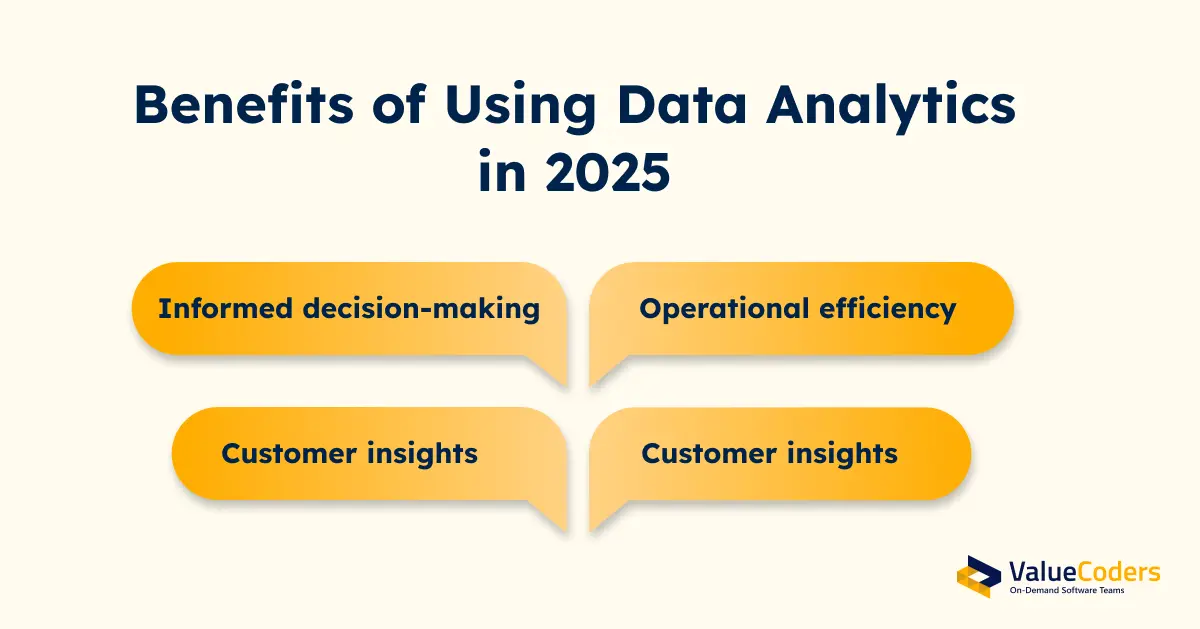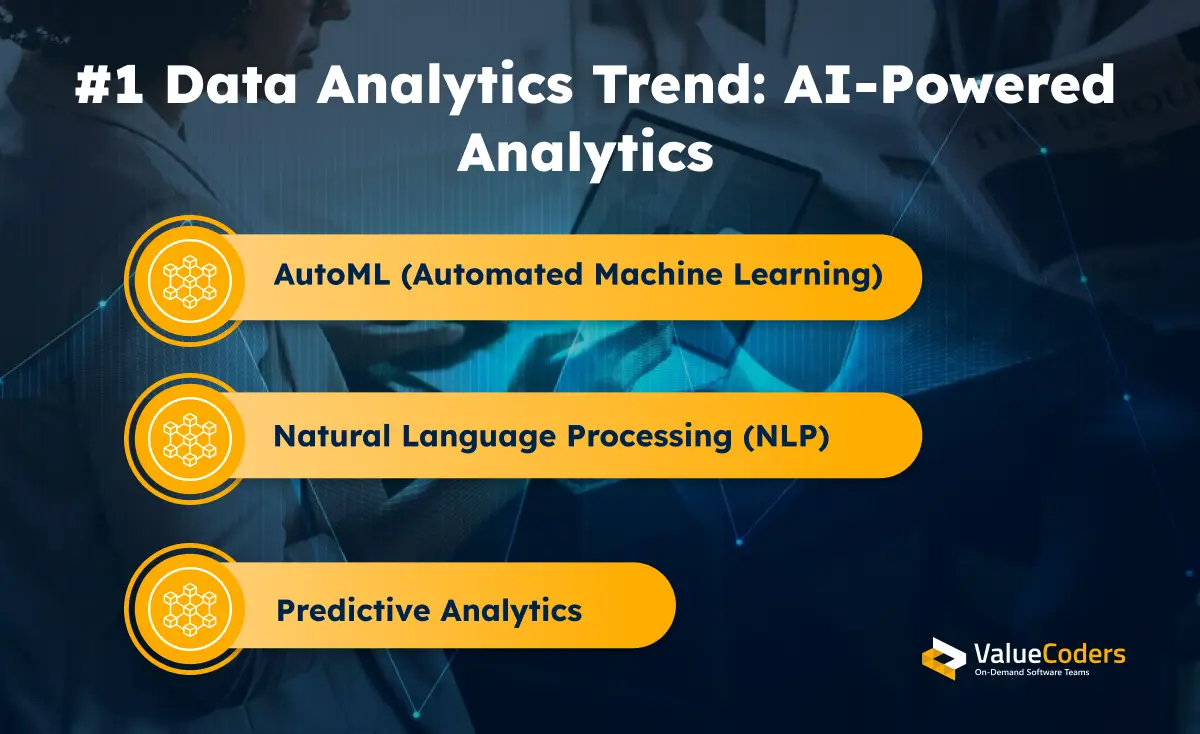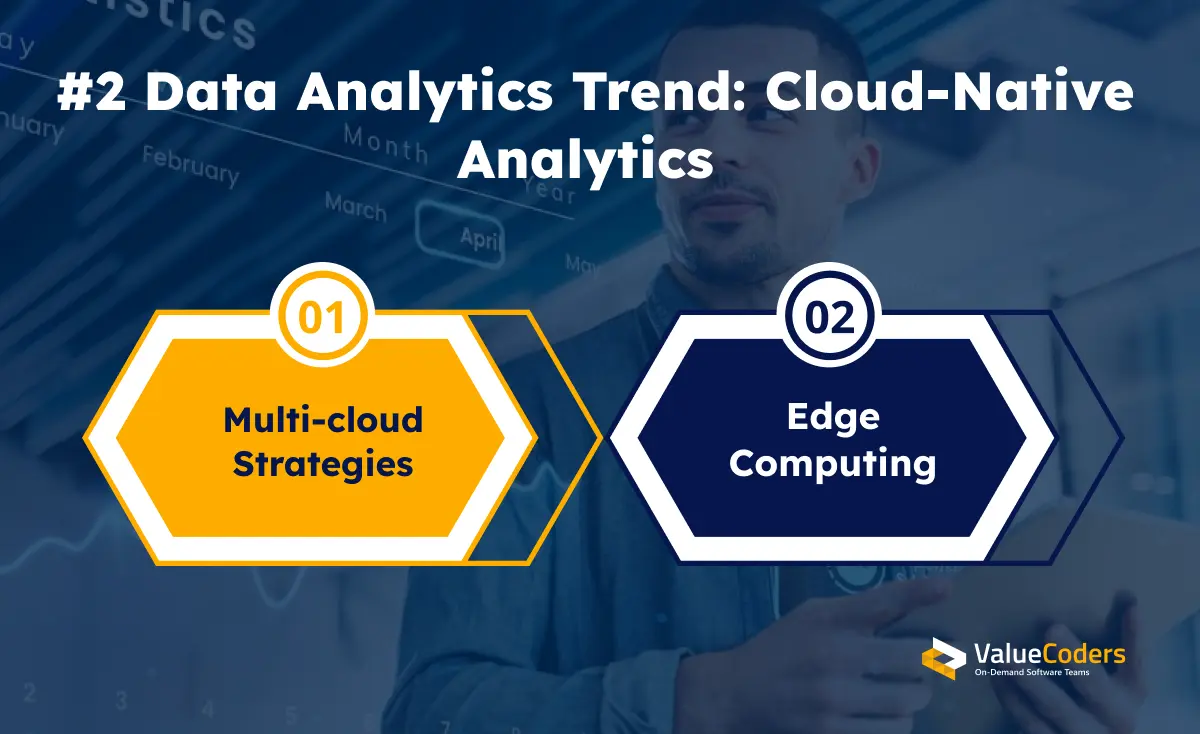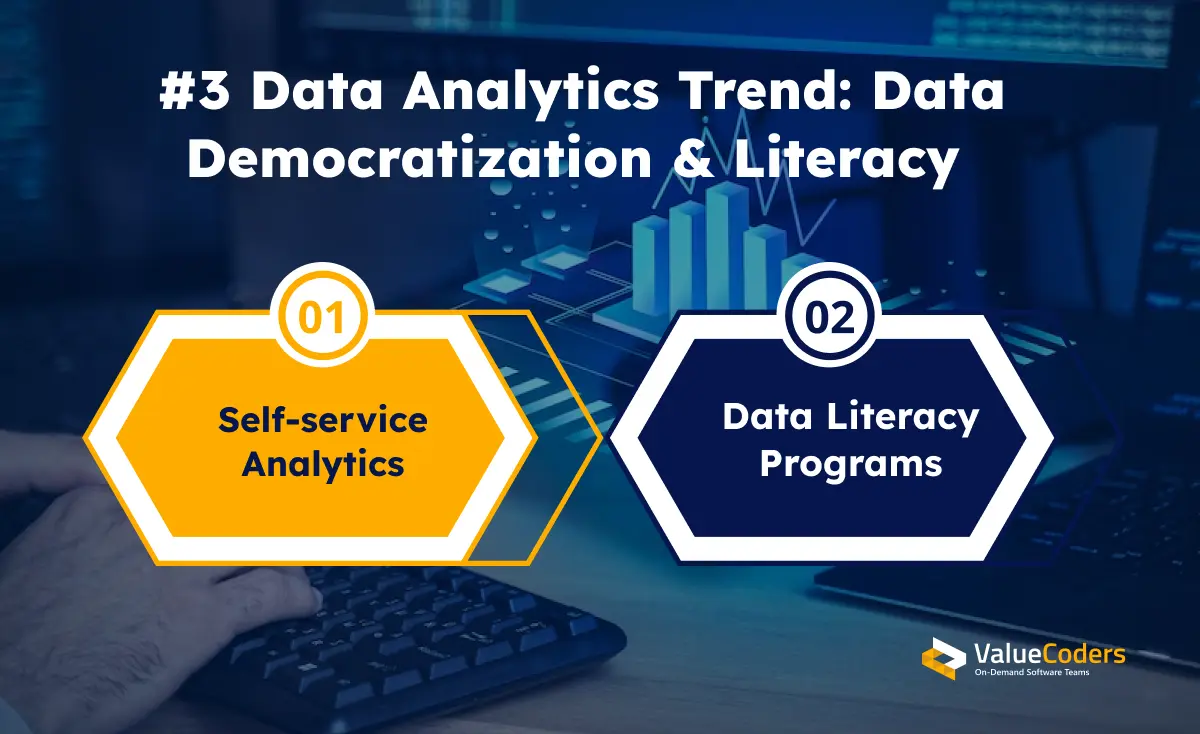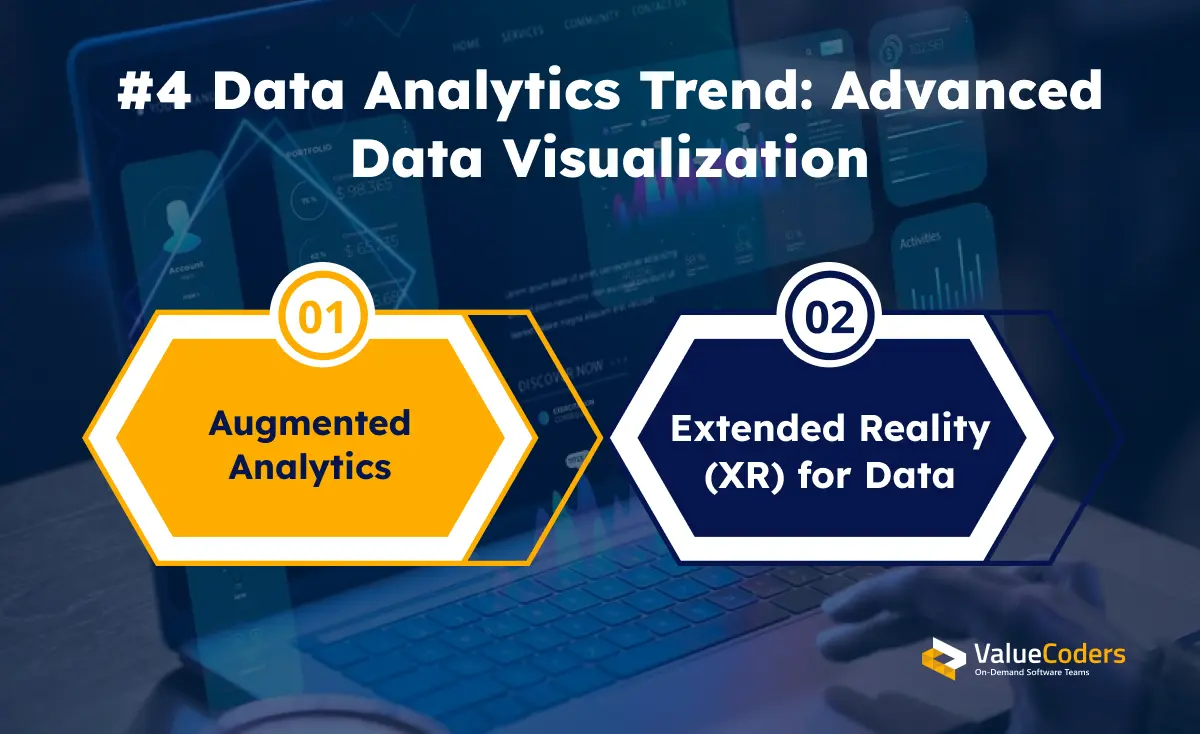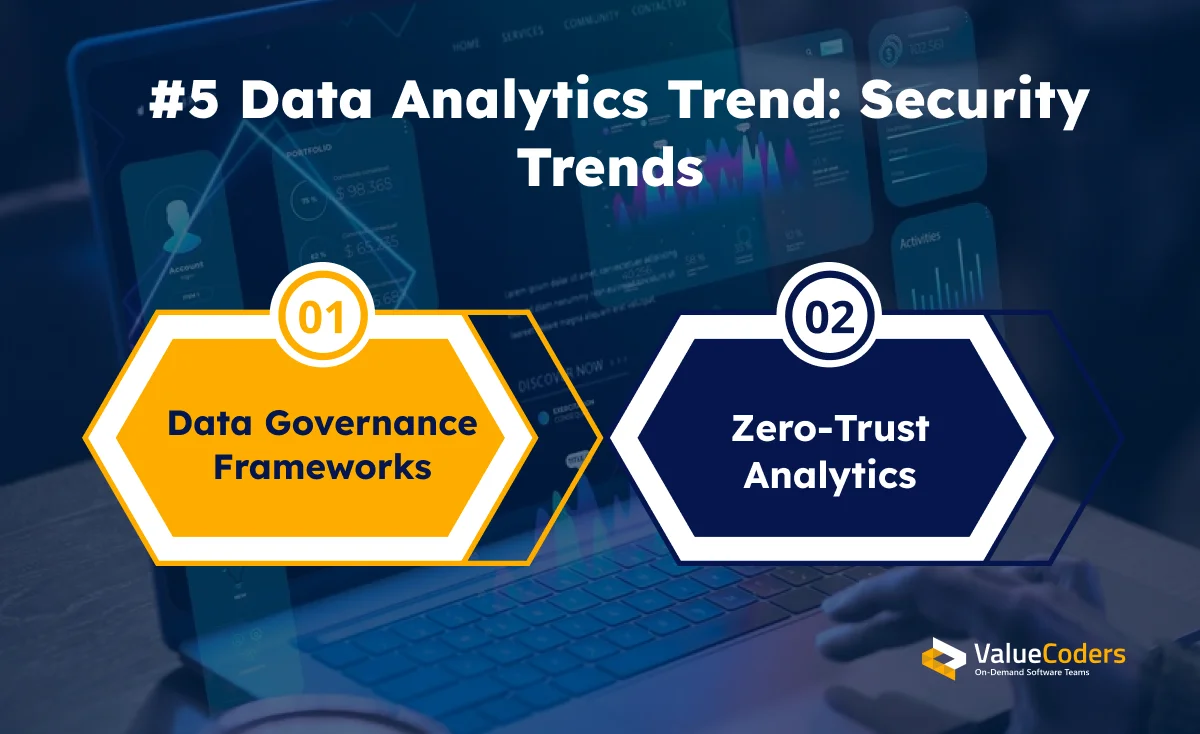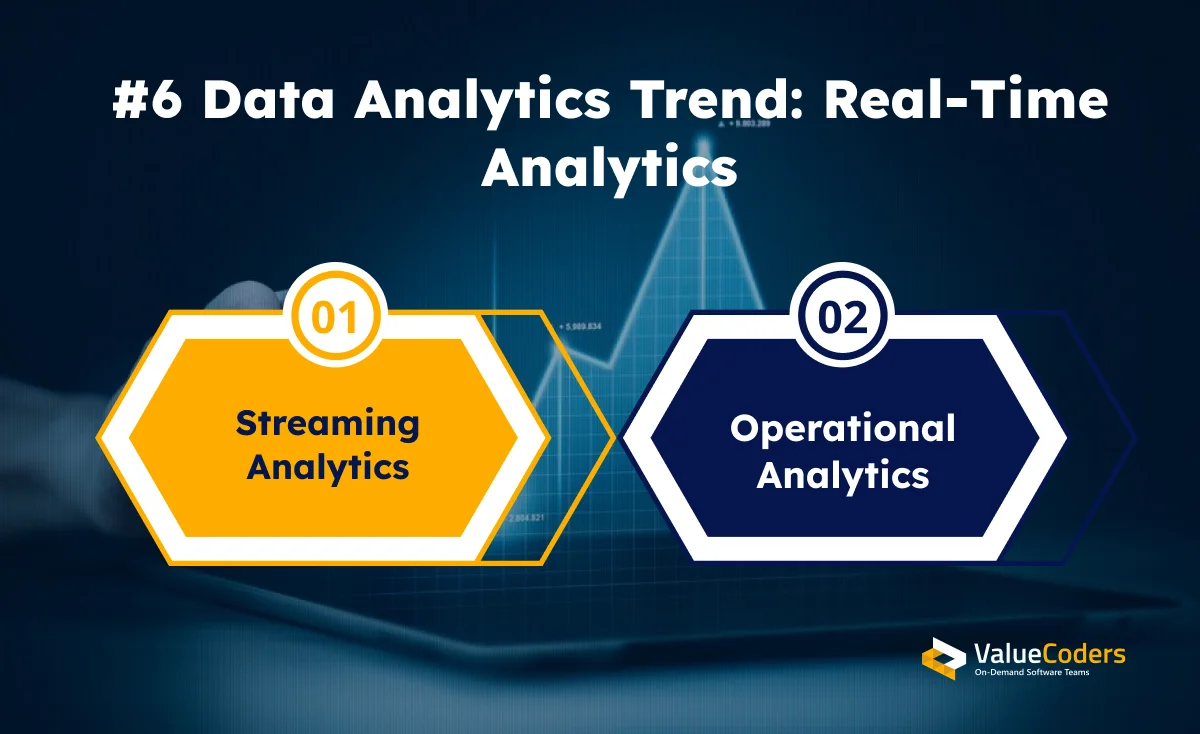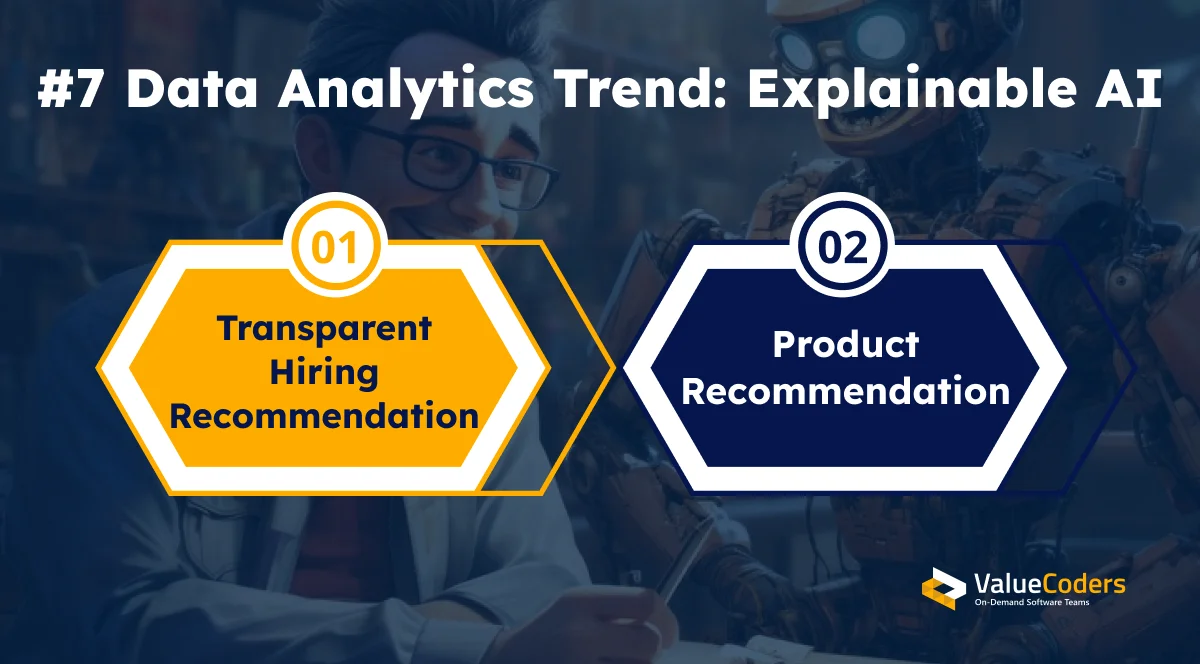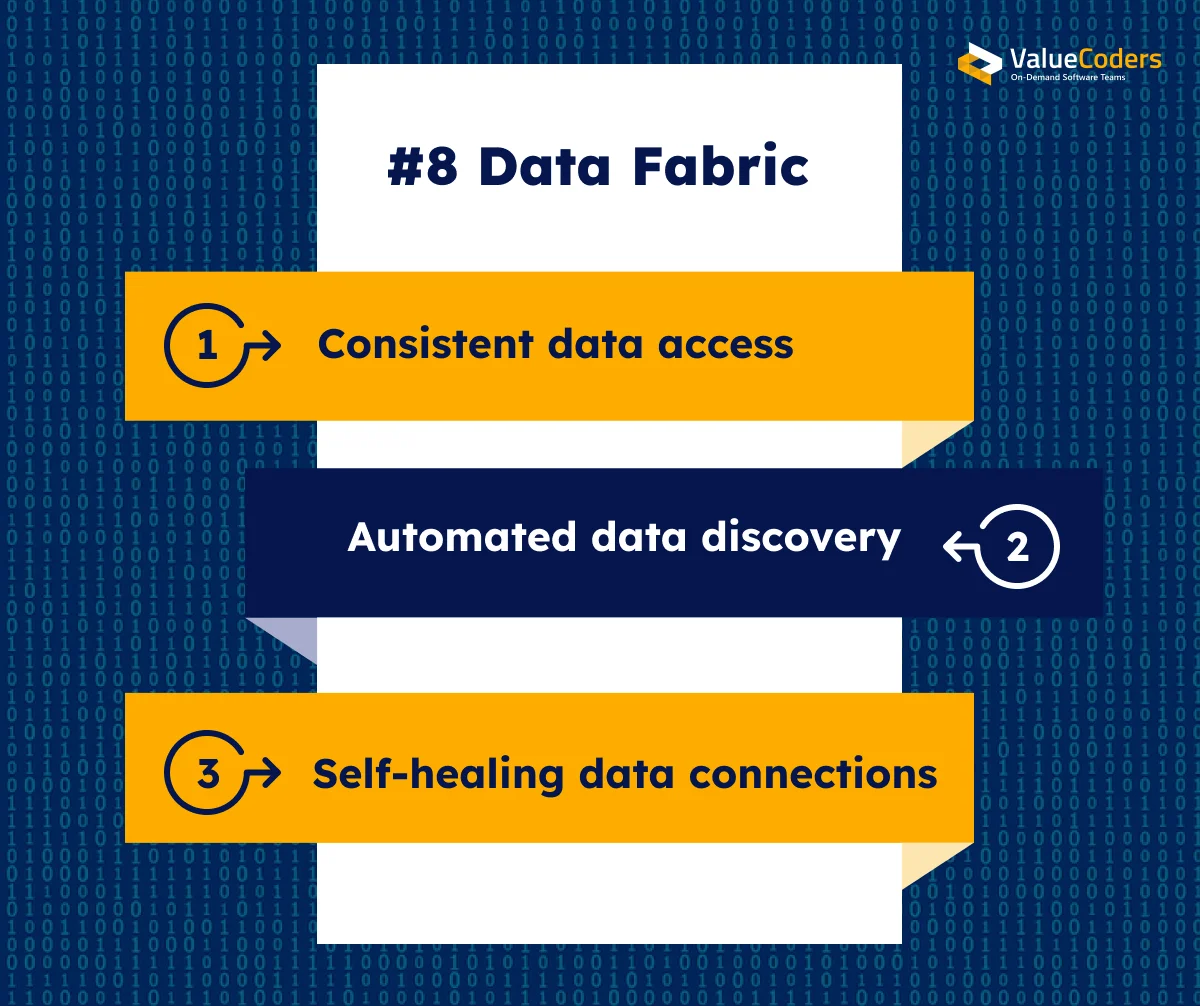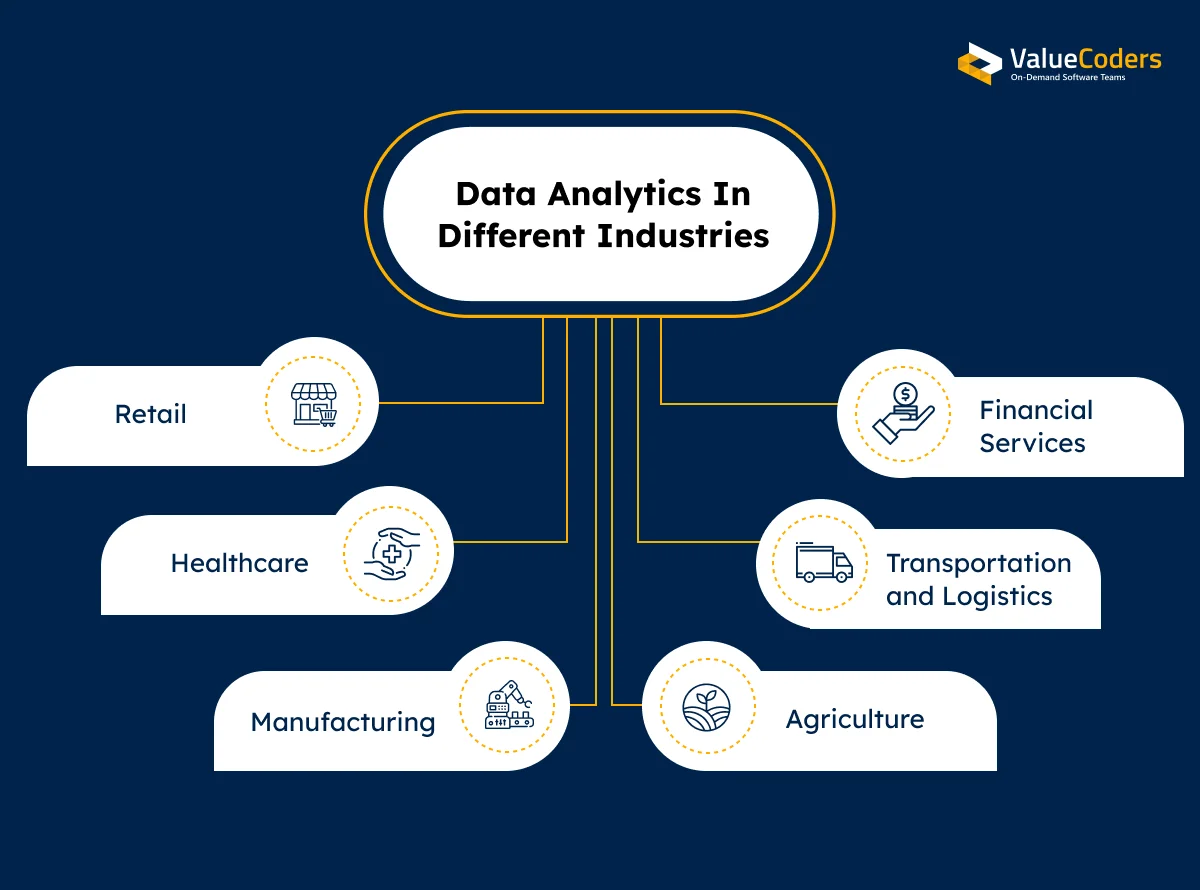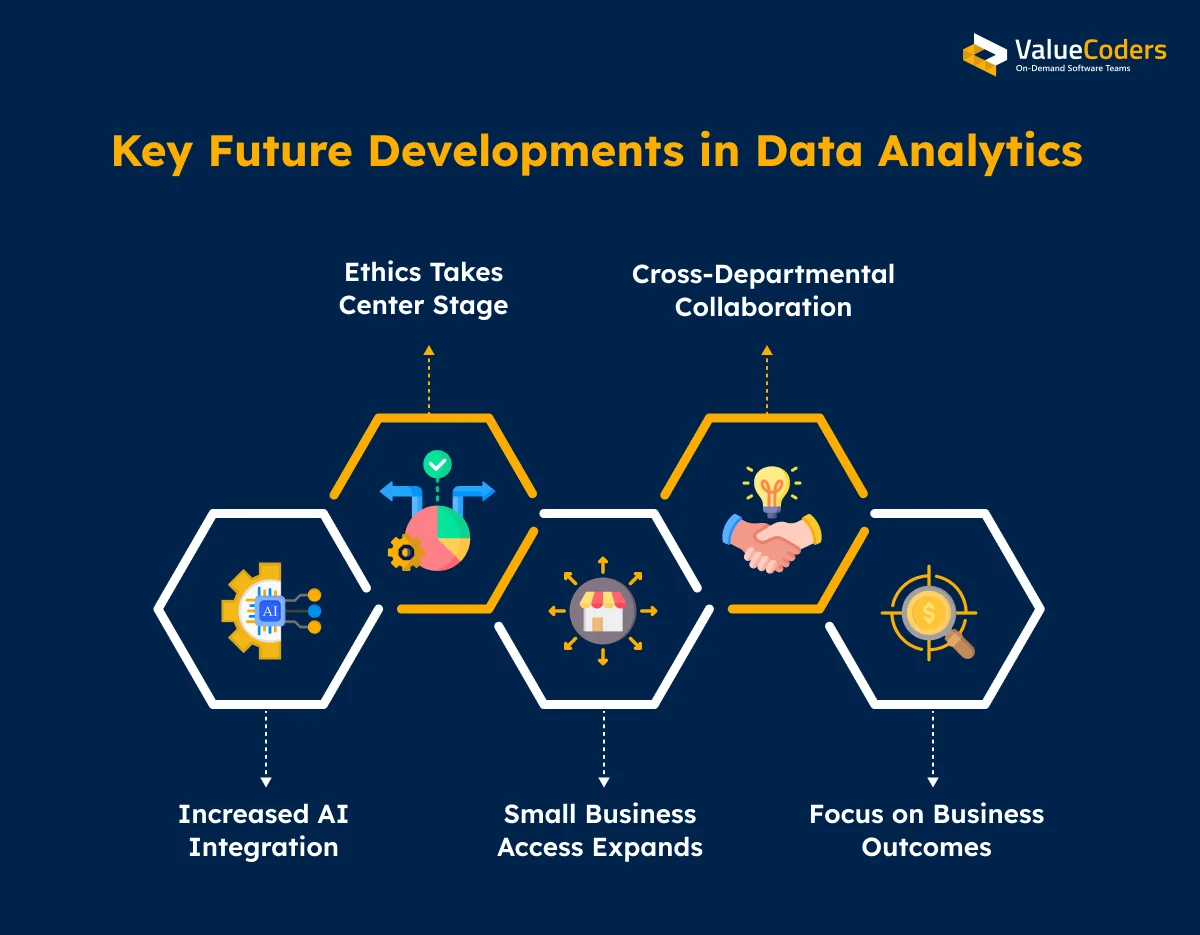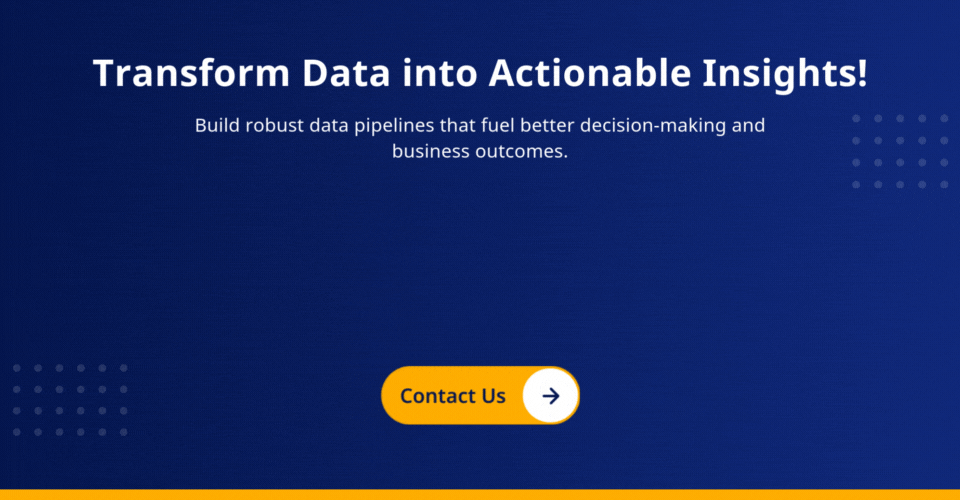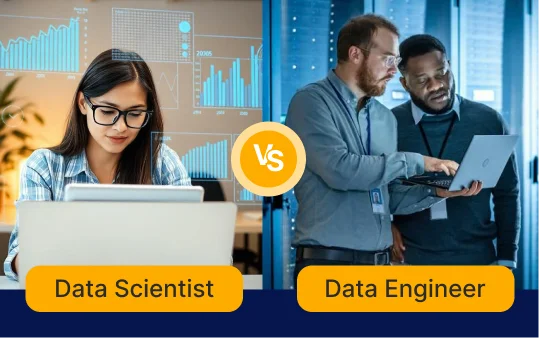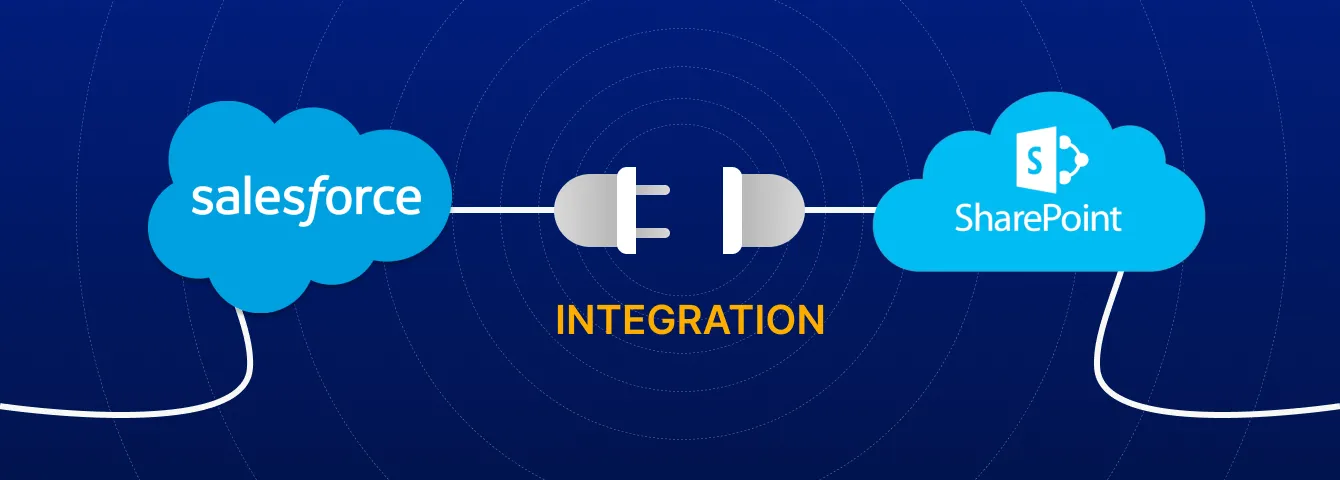According to Businesswire news, 70% of leaders expect that over half of the corporations will be on the data lakehouse, and 86% plan to unify data analytics. The good news is that advanced data tools are now more accessible than ever before.
From smarter AI systems to better ways of sharing data knowledge across teams, these trends offer practical ways for companies to work smarter rather than harder.
Explore the top data analytics trends of 2025, with a special focus on how smaller organizations can put these methods to work. You will find the specific ways these shifts can help your business succeed in today’s competitive markets.
Why is Data Analytics Important for Businesses in 2025?
In today’s highly competitive marketplace, businesses that harness their data effectively gain decisive advantages.
From predicting customer behavior to optimizing operations, data analytics has evolved from a specialty function to a core business necessity.
Informed decision-making
Gone are the days when business choices depended mainly on gut feelings. In 2025, companies using data engineering services make choices based on solid evidence:
- Sales teams target the most promising prospects based on actual customer behavior patterns
- Marketing dollars go toward campaigns with proven returns
- Product decisions follow real user feedback rather than assumptions
Example:
A small retail chain in Portland recently boosted sales by 23% after using customer purchase data to redesign their store layouts. Their data showed which products customers often bought together, allowing for smarter product placement that increased average purchase amounts.
Operational efficiency
Data helps businesses spot waste and find better ways to work:
- Manufacturing companies cut production delays by tracking bottlenecks
- Delivery services find faster routes by examining traffic patterns
- Restaurants reduce food waste by studying order patterns
Example:
A medium-sized distribution company in Texas trimmed costs by 17% after analyzing their warehouse operations data. They discovered certain products were stored too far from loading docks, causing unnecessary worker movement and time waste.
With 20+ years of analytics innovation, we deliver tailored solutions that drive smarter, faster business decisions.
Customer insights
Understanding your customers has never been more vital. As a leading data analytics services company, you can do so by asking the following questions:
- What do they want?
- When do they buy?
- Why do they leave?
Example:
A family-owned jewellery business in Chicago began tracking customer browsing behavior on their website. This data revealed that customers spent the most time looking at custom pieces. By expanding this section, they increased online sales by 31% within three months.
Competitive edge
Companies using data well simply outperform those that don’t:
- They spot market shifts faster
- They adapt to changes quicker
- They find opportunities others miss
Example:
A small marketing agency gained several major clients after using data to prove their campaigns outperformed competitors by tracking actual customer actions rather than just impressions.
Also Read: Top 10 Data Analytics Companies Globally
Top Data Analytics Trends To Watch in 2025
The data analytics continues its rapid evolution, pushing beyond traditional approaches toward more integrated, accessible solutions. The following top data analytics trends are redefining how organizations extract value from their information assets:
1. AI-Powered Analytics (AutoML, NLP, Predictive Analytics)
AI in data analytics makes data work accessible to companies without data science teams. In 2025, these AI tools will continue to mature:
AutoML (Automated Machine Learning)
These systems build and refine prediction models with minimal human input. Small businesses now use AutoML to:
- Forecast inventory needs based on past sales patterns
- Predict which customers might cancel services
- Spot unusual transactions that could signal fraud
A regional hardware chain with just five locations uses AutoML to predict seasonal demand for various products. Their system learned from three years of sales data, now helping them stock appropriately without expensive overbuying.
Natural Language Processing (NLP)
NLP helps computers understand human language, opening new data sources:
- Customer service chats and emails
- Social media mentions
- Survey comments
A medium-sized hotel chain now uses NLP to scan all online reviews. They quickly spotted that guests frequently mentioned bathroom lighting problems, an issue they hadn’t recognized through numerical ratings alone.
Implement zero-trust architectures and compliance frameworks perfected by our 20+ years in secure software solutions.
Predictive Analytics
Predictive analytics for business uses historical data to forecast future events:
- Which products will sell next month?
- Which equipment might fail soon?
- When will customer demand peak?
A small manufacturing company uses predictive maintenance to service machines before they break down, cutting repair costs by 40% and nearly eliminating emergency downtime.
2. Cloud-Native Analytics (Multi-cloud, Edge Computing)
The cloud continues to transform how businesses handle data in 2025:
Multi-cloud Strategies
Companies now spread their data tools across multiple cloud providers:
- Using Google Cloud for machine learning
- AWS for data storage
- Microsoft Azure for business intelligence
This approach lets businesses choose the best tools from each platform rather than limiting themselves to one provider’s offerings.
Edge Computing
Processing data near its source (the “edge”) rather than sending everything to central servers:
- Retail stores analyze shopper behavior locally
- Factory sensors process production data immediately
- Restaurants track food preparation times on-site
A chain of fitness centers now processes member activity data within each location. This allows real-time adjustments to class schedules based on attendance patterns, all without waiting for central office analysis.
3. Data Democratization and Literacy (Self-service analytics, Data literacy)
In 2025, data access expands beyond specialists:
Self-service Analytics
User-friendly tools let non-technical staff answer their own data questions:
- Sales teams check performance without asking analysts
- Marketing groups test campaign results independently
- Department heads track budgets directly
A small construction company equipped project managers with simple dashboards showing real-time material usage. Managers now spot waste immediately rather than discovering problems at month-end.
Data Literacy Programs
Companies actively teach staff to understand and use data:
- Basic statistics training
- Data visualization workshops
- Data-driven decision making
A regional insurance broker saw claims processing speed improve 28% after teaching all staff basic data skills. Employees now check the right data points before processing, reducing errors and rework.
Also Read: Top 10 Big Data Analytics Firms in India
4. Advanced Data Visualization (Augmented analytics, Extended reality)
Seeing data clearly drives better understanding:
Augmented Analytics
These tools automatically highlight important patterns:
- Unusual sales spikes
- Customer behavior changes
- Cost anomalies
A family-run manufacturing business uses augmented analytics to check quality control measurements. Their system automatically flags unusual patterns that might indicate equipment problems.
Extended Reality (XR) for Data
Virtual and augmented reality create new ways to interact with information:
- Walking through 3D data representations
- Manipulating charts with hand gestures
- Viewing building plans overlaid on actual sites
A medium-sized architecture firm now lets clients view building data through AR glasses, showing energy usage patterns throughout proposed designs.
5. Privacy and Security Trends (Data governance, Zero-trust analytics)
In 2025, responsible data use becomes even more critical:
Data Governance Frameworks
Structured approaches to managing information:
- Clear policies on data collection
- Documented data handling procedures
- Regular compliance checks
A regional healthcare provider implemented a governance framework that reduced data access violations by 87% while actually improving staff access to necessary information.
Zero-Trust Analytics
This approach assumes nothing about data security:
- All access requests verified, regardless of source
- Continuous authentication during data sessions
- Minimal access privileges by default
A small financial services firm adopted zero-trust principles for client data, giving them a marketing advantage by promoting their superior security practices.
6. Real-Time Analytics (Streaming analytics, Operational analytics)
Business happens in real-time, and analytics now keeps pace:
Streaming Analytics
Processing data as it arrives rather than in batches:
- Retail price adjustments based on demand
- Traffic-based delivery routing changes
- Instant fraud detection during transactions
A medium-sized online retailer implemented streaming analytics to adjust product recommendations as customers browse. This increased cross-sell success by 22%.
Empower real-time decision-making with embedded analytics solutions crafted by our award-winning engineering team.
Operational Analytics
Embedding data insights directly into business processes:
- Automated inventory reordering
- Customer service routing based on issue detection
- Dynamic resource allocation
A small logistics company used data analytics consulting services. Drivers now receive optimized routes that adjust throughout the day based on traffic and new orders.
7. Explainable AI (XAI)
As AI makes more business decisions, understand why it becomes crucial:
- Clear explanations for credit approvals/denials
- Transparent hiring recommendation factors
- Understandable product recommendation reasons
A regional bank implemented XAI for loan decisions. Loan officers now see exactly which factors influenced the recommendation, allowing them to better explain decisions to customers.
Also Read: Most Advanced Data Analytics Techniques Every Business Should Know
8. Data Fabric
This emerging approach creates a unified data environment:
- Consistent data access regardless of location
- Automated data discovery across the business
- Self-healing data connections
A multi-location retail business implemented a data fabric connecting their point-of-sale systems. They now have real-time visibility across all locations without manual data consolidation.
Top Industries Where Data Analytics Is Used
While data drives decisions across virtually every sector, some specific industries have pioneered particularly innovative applications. The following sectors show how analytics brings innovations to operations, customer experiences, and strategic planning.
Retail
Retailers use data to:
- Calculate optimal pricing
- Create personalized shopping experiences
- Manage inventory more precisely
For example:
A boutique clothing chain uses analytics to determine which styles to stock in different locations based on local buying patterns.
Healthcare
Medical organizations rely on data for:
- Patient outcome prediction
- Resource allocation during busy periods
- Preventive care targeting
For example:
A small medical practice uses analytics to identify patients who might benefit from preventive screenings, improving early detection rates.
Enhance data integrity with AI-driven governance frameworks trusted by global enterprises across 20+ industries.
Manufacturing
Factories utilize data to:
- Predict equipment maintenance needs
- Refine production processes
- Reduce material waste
For example:
A custom furniture manufacturer tracks each piece through production, using data to eliminate bottlenecks and reduce delivery times.
Financial Services
Banks and investment firms apply data to:
- Detect fraudulent activities
- Assess lending risks
- Personalize financial advice
For example:
A regional credit union uses data analytics to offer personalized financial wellness suggestions based on each member’s spending patterns.
Transportation and Logistics
Moving goods efficiently requires data for:
- Route optimization
- Maintenance scheduling
- Demand forecasting
For example:
A small trucking company uses analytics to schedule driver shifts based on historical delivery data, reducing overtime costs by 23%.
Agriculture
Modern farming relies on data for:
- Crop yield prediction
- Resource allocation (water, fertilizer)
- Weather impact assessment
For example:
A family-owned farm uses soil sensor data to apply water only where needed, cutting water usage by 30% while maintaining crop yields.
Future of Data Analytics
The next frontier of data analytics promises to blend human expertise with increasingly sophisticated technical capabilities. Businesses that prepare now will be positioned to turn tomorrow’s data challenges into competitive opportunities.
The future of data analytics will see several key developments:
Increased AI Integration
The line between traditional analytics and AI continues to blur:
- Automated insight generation becomes standard
- Complex analysis happens without human guidance
- Results arrive with recommended actions attached
Ethics Takes Center Stage
Responsible data use becomes a primary business concern:
- Companies establish ethics committees for data decisions
- Transparency in data collection becomes expected
- Fairness in automated decisions faces greater scrutiny
Small Business Access Expands
Advanced analytics tools become more available to smaller companies:
- Pay-as-you-go options reduce upfront costs
- Industry-specific solutions require less customization
- User interfaces continue simplifying
Cross-Departmental Collaboration
Data breaks down business silos:
- Marketing and sales share customer insights seamlessly
- Operations and finance make joint decisions using shared data
- Product development incorporates customer service feedback automatically
Focus on Business Outcomes
The industry shifts from technology discussions to results:
- ROI becomes the primary metric for data projects
- Business leaders drive data strategy more directly
- Technical discussions translate to business impacts
Also Read: Top Data Engineering Platforms in 2025 And Beyond: A Comparative Analysis
Conclusion
Data analytics in 2025 offers businesses powerful tools to work smarter and compete effectively. The top data analytics trends listed above show that data capabilities continue growing more accessible, more powerful, and more integrated into everyday business operations.
The most successful businesses will start small, focus on specific business problems, and expand their data capabilities gradually. By taking incremental steps toward data maturity, they will find themselves making better decisions, serving customers more effectively, and positioning themselves for long-term success.
If you are one of those businesses looking to deploy data analytics in your next project, feel free to contact ValueCoders. We have been a leading big data consulting & management company since 2004.
We have deployed analytics in various successful projects. We have served a global clientele including Infosys, Spinny, DubaiPolice, Kia, HelloPeter, etc.


